HMMA Q1 2022 Newsletter
February 1, 2022HMMA-830-02 Hardware Selection for Hollow Metal Doors and Frames

The hardware used not only determines how well a door functions, but is also an important factor in the working life of the opening. Among the many benefits of custom hollow metal is the virtually unlimited choice of hardware that can be used. The architect is free to select those items which will provide the operational features, aesthetics, and quality desired, such as the use of electrical hardware, pivots or anchor hinges, concealed closers, concealed vertical rod devices, separate deadlocks, preassembled locks, and other architectural hardware.
For any hardware item to function properly, the door and/or frame must be properly prepared. The durability of the hardware and its attachment depends on the strength of the preparation. For example, preassembled (“unit”) locks cannot be properly installed by simply making a rectangular cutout in the door edge. The type of lock to be used must be known in advance by the door manufacturer so the appropriate reinforcement and preparation can be built into the door. The same is true of all other architectural hardware items.
Field applied hardware preparations cannot compare in strength or quality with factory-made preparations. Since the custom manufacture of hollow metal is designed for a specific purpose, its reinforcing and preparation are within the tolerances specified for the hardware and provide the strength for secure fasteners.
This publication is intended to acquaint the reader with commonly used door hardware that provide both aesthetic appeal and durable function. This summary is not intended as a reference catalog or a comprehensive source of hardware information, but only as an indication of the variety of hardware choices available.
Refer to HMMA-830-02 to review the ones page Tech Note.
HMMA-830-02 Hardware Schedule for Hollow Metal Doors and Frames

In order to properly prepare each opening for the specified hardware items, a hardware schedule, corresponding templates, and catalog cuts, if appropriate, are required. The hardware schedule must be understandable and accurately relate the specific hardware to the specific opening in a logical manner. Although there are alternate schedule formats, the vertical hardware schedule is most commonly used and preferred.
The vertical schedule lists the exterior openings first, followed by the interior openings, and miscellaneous items last.
The following information is required at the beginning of a hardware schedule:
- Job: Name, location, and telephone number.
- Architect: Name, location, and telephone number.
- Contractor: Name, location, and telephone number.
- Hardware Supplier: Name, location, and telephone number.
- Door and Frame manufacturer: (if known) Name, location, and telephone number.
- Hardware manufacturers’ names for all listed Items.
- Template numbers.
- Abbreviations.
WITHIN THE HARDWARE SCHEDULE, ONLY OPENINGS WITH IDENTICAL HARDWARE SHOULD BE LISTED UNDER THE SAME HARDWARE SET.
Each hardware set must include all information required to properly prepare the opening for the hardware.
This includes:
- Hardware set number
- Opening identification and location
- Door and frame material
- Door and frame dimensions
- Hand of door
- Special door or frame conditions
- Degree of opening and hold open
- Label requirements
- Each hardware item, including;
- Product description
- Finish
- Hand
- Size
- Template number
- Special requirements
The sequence for listing each hardware item is as follows:
- Hanging Devices
- Securing Devices
- Operating Trim
- Accessories for Pair of Doors Only
- Closing and Controlling Devices
- Protective Plates and Trim
- Stops and Holders
- Accessories
- Miscellaneous
THE LOCATION OF HARDWARE ON DOORS AND FRAMES SHALL BE AS SPECIFIED IN THE HOLLOW METAL DOOR AND FRAME SPECIFICATION.
Refer to HMMA-830-02 to review the ones page Tech Note.





